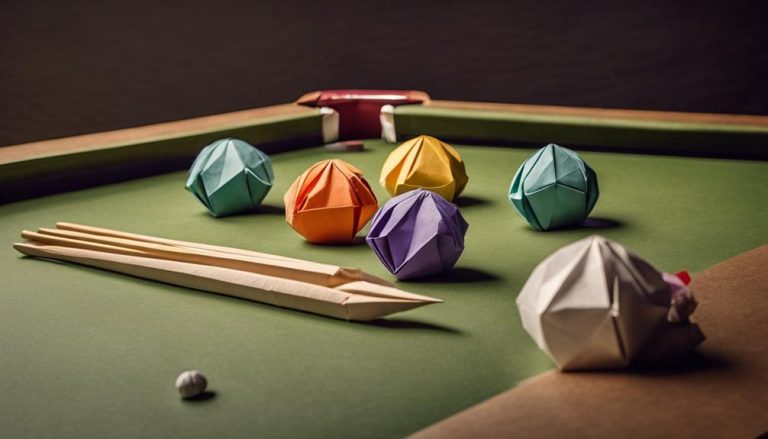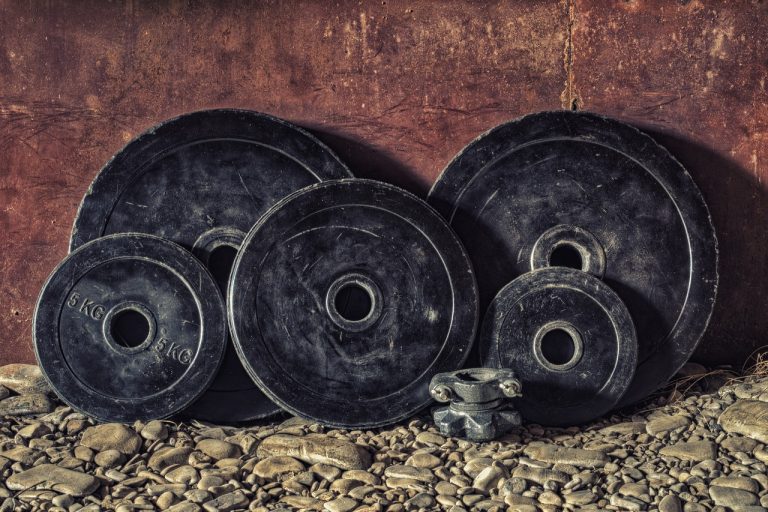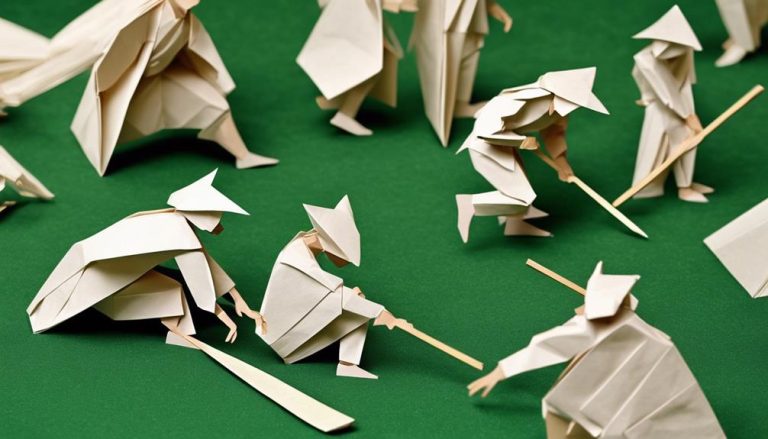General Rules of Indoor Field Hockey
Equip yourself with essential gear like sticks, shin guards, and mouthguards. Understand player positions for effective team composition. Pay attention to field dimensions and the role of sideboards. Know goalie regulations and communicate well with your team. Work on shot placement, passing accuracy, and offensive tactics. Learn various penalty corner tactics for scoring opportunities. Master substitution guidelines and strategic positioning. Develop stick handling techniques for ball control and adaptability. Be aware of halves duration, stoppage time, and umpires' responsibilities. These rules lay the groundwork for a thrilling indoor field hockey experience.
Equipment Requirements
When preparing for indoor field hockey, it's important to make sure you have the appropriate gear that complies with the sport's regulations and safety standards. Equipment maintenance plays a crucial role in ensuring that your gear remains in top condition for peak performance and safety on the field. Before each game or practice session, take the time to inspect your equipment, including your stick, shin guards, mouthguard, and goggles if required. Look for any signs of wear and tear, such as cracks, loose padding, or damaged straps, and address these issues promptly to prevent any potential accidents during play.
Safety precautions are paramount in indoor field hockey to protect yourself and others from injuries. When it comes to equipment, ensure that your stick meets the regulations regarding length, weight, and shape. Using a stick that is not approved can result in penalties or even disqualification from the game. Additionally, wearing appropriate protective gear, such as shin guards and a mouthguard, can greatly reduce the risk of injuries during gameplay. Always follow the guidelines set forth by the sport's governing bodies to maintain a safe and enjoyable playing environment for everyone involved. Remember, safety should always be your top priority when gearing up for indoor field hockey.
Team Composition
Ready to step into the dynamic world of team composition in indoor field hockey? Let's break down the essential points: player positions, substitution rules, and captain responsibilities. Understanding these elements is key to maximizing your team's performance on the field. So, get ready to elevate your game by mastering the ins and outs of team composition!
Player Positions
Understanding the various player positions in indoor field hockey is essential for mastering team composition and strategy on the field. Defensive strategies rely on strong defenders who can intercept passes and protect the goal, while offensive strategies require agile forwards who can score goals and create opportunities. Player development is vital to guarantee each team member excels in their designated position, contributing effectively to the team dynamics. Team dynamics play a significant role in how players interact on the field, understanding each other's strengths and weaknesses to work cohesively towards victory. By strategically placing players in positions that align with their skills, a team can maximize its potential and adapt to different game situations, ultimately increasing its chances of success.
Substitution Rules
To optimize your team's performance in indoor field hockey, mastering the substitution rules is crucial for maintaining a strong team composition throughout the game. Here are three key aspects to ponder:
- Player rotation: Strategically substituting players allows for maintaining a high level of intensity and skill on the field. Rotate players based on their strengths and the flow of the game to keep your team competitive.
- Game strategy: Substitutions can be a tactical advantage. Use them to adapt your team's gameplay, exploit the opponent's weaknesses, or counter their strengths.
- Bench management, team dynamics: Effectively managing substitutions ensures that players stay fresh and motivated. Maintaining a positive atmosphere on the bench contributes to a cohesive team dynamic, enhancing overall performance.
Captain Responsibilities
Assuming the role of captain in indoor field hockey involves overseeing team composition and ensuring peak performance through strategic leadership. As the captain, you hold an essential position in the team dynamics, responsible for implementing game strategies and motivating your teammates. Your leadership skills play a critical role in guiding the team towards success, both regarding game tactics and overall morale. It is essential to communicate effectively with your teammates, understanding their strengths and weaknesses to optimize team composition during matches. Captains often act as the liaison between players and the coach, providing valuable insights and feedback to enhance the team's performance. Embrace your role with confidence, and lead your team to victory through strategic planning and effective communication.
Field Dimensions
When arranging the field for indoor field hockey, it is crucial to adhere to specific dimensions to ensure a fair and competitive game. Ensuring the accurate field dimensions not only contributes to the overall player safety but also enhances the flow of the game. Here are three key elements to take into account when it comes to field dimensions:
- Length and Width: The standard indoor field hockey court is typically 40 meters long and 20 meters wide. These measurements provide enough space for players to display their skills while maintaining a fast-paced and dynamic gameplay. The size of the field allows for strategic maneuvers and quick transformations, keeping the game engaging for all participants.
- Sideboards: Surrounding the field, you will find sideboards that are approximately 30 cm high. These boards help keep the ball in play and add an element of strategy as players can use them to rebound the ball effectively. The sideboards also act as a safety feature by preventing the ball from leaving the designated playing area, reducing interruptions and ensuring continuous gameplay.
- Goal Size: Indoor field hockey goals are usually 3 meters wide and 2 meters high. The dimensions of the goal are designed to challenge both attackers and defenders, requiring precision and skill to score. A well-placed shot can make all the difference in a game, adding excitement and intensity to each scoring opportunity.
Goalkeeper Regulations
When it comes to indoor field hockey goalkeeper regulations, you'll want to pay close attention to three key points: goalie equipment requirements, positioning and movement, and communication with teammates. Understanding these aspects not only enhances your performance as a goalie but also guarantees effective teamwork on the field, ultimately leading to success. So, let's break down these essential elements to help you excel in your role as a goalkeeper.
Goalie Equipment Requirements
Ensuring the goalie is equipped with the proper gear is essential to their safety and performance on the indoor field hockey field. When it comes to goalie equipment requirements, here are three important items to keep in mind:
- Helmet: A well-fitted helmet is vital for protecting the goalie's head from fast-moving balls and potential collisions during the game.
- Padded Leg Guards: These guards provide essential protection for a goalie's legs, especially when diving or blocking shots on goal.
- Gloves: Goalie gloves offer grip and protection when stopping or deflecting the ball, enhancing the goalie's ability to make crucial saves.
Positioning and Movement
To excel as an indoor field hockey goalkeeper, mastering the art of positioning and movement is essential for effectively maneuvering the regulations specific to this role. Defensive positioning is vital to protect the goal, while offensive movement can help in initiating counterattacks. Strategic positioning involves anticipating plays and adjusting your stance accordingly, ready to react swiftly to any incoming shots or passes. Quick movement is key to covering the goal efficiently, whether it's sliding to block low shots or diving to save high shots. By combining strategic positioning with rapid movement, you can enhance your performance as a goalkeeper, becoming a formidable presence in the indoor field hockey arena.
Communication With Teammates
For a goalkeeper in indoor field hockey, effective communication with teammates is an essential aspect of ensuring defensive coordination and strategic play on the field. Here are three key elements to contemplate when focusing on communication as a goalkeeper:
- Team Strategies: Communicate the team's defensive strategies clearly to guarantee everyone is on the same page and can execute plays effectively.
- Player Communication: Constantly communicate with your teammates, providing guidance, support, and updates on the game's developments to maintain a cohesive defensive unit.
- Offensive Tactics and Defensive Coordination: By vocalizing offensive threats and coordinating defensive movements, you can anticipate plays and react swiftly to maintain a strong defensive line.
Effective communication can be the difference between a successful defensive effort and leaving gaps for the opposition to exploit.
Scoring Methods
When it comes to scoring in indoor field hockey, vital and decisive are pivotal elements that can make all the difference in a match. In this fast-paced game, mastering shot placement and understanding defensive strategies are essential for putting points on the board. Your ability to accurately aim your shots can exploit gaps in the opposing team's defense, increasing your chances of scoring. By observing how defenders position themselves, you can identify areas where the goalie might be vulnerable, allowing you to capitalize on scoring opportunities.
Passing accuracy and offensive tactics are equally essential when aiming to score in indoor field hockey. Your team's coordination in passing the ball with speed and precision can create openings in the opposing defense, enabling you to take advantage of those moments to score. Effective communication and strategic plays can confuse the defense, opening up space for you to make a successful shot on goal.
Penalty Corner Rules
Penalty corners in indoor field hockey serve as essential opportunities for teams to capitalize on offensive strategies and break through the opposing defense with strategic plays and precise execution. When it comes to penalty corner rules, understanding both offensive and defensive tactics is important for success on the field.
Here are three key points to keep in mind when it comes to penalty corners:
- Penalty Corner Strategies: Teams often employ various tactics during penalty corners to outmaneuver the defense. These strategies can include drag flicks, slap shots, or deceptive passes to confuse the opposition and create scoring opportunities.
- Defensive Tactics: On the defensive end, teams must be prepared to defend against a range of offensive plays during penalty corners. This can involve setting up strong defensive lines, utilizing effective marking techniques, and coordinating goalkeeper positioning to block shots on goal.
- Penalty Corner Variations: Coaches and players often work on developing unique penalty corner variations to catch the opposing team off guard. These variations can involve unexpected passes, intricate set plays, or quick shots to capitalize on defensive weaknesses and score important goals.
Substitution Guidelines
Expanding on the tactical aspects of indoor field hockey, understanding the Substitution Guidelines is essential for maintaining momentum and strategic advantage during gameplay. Player rotations and substitution strategy play an essential role in keeping the team fresh and maximizing performance. Effective substitutions can also help in managing fatigue and ensuring that players perform at their best throughout the game.
In indoor field hockey, substitution patterns are key to strategic gameplay. Coaches must carefully plan when and who to substitute to maintain the team's energy levels and adapt to the flow of the game. Quick and well-thought-out substitutions can provide the team with a competitive edge, allowing for players to rest when needed without compromising the team's performance.
When considering substitution guidelines, it's important to assess not only individual player performance but also the overall team dynamics. Understanding each player's strengths and weaknesses can aid in making strategic substitutions that complement the team's tactics. By observing how different players contribute to the game, coaches can make informed decisions on when to rotate players to optimize the team's performance.
Offside Rule
Understanding the Offside Rule in indoor field hockey is essential for players to strategically position themselves on the field and make effective plays. The Offside Rule in indoor field hockey can sometimes be confusing, but once you grasp its concept, you can use it to your advantage on the field.
Here are three key points to help you better understand the Offside Rule:
- Offside Interpretation: In indoor field hockey, a player is in an offside position if they are closer to the opponent's goal line than both the ball and the second-to-last defender when the ball is played to them. Understanding this interpretation is crucial to avoid committing offside violations and to stay in a favorable position during offensive plays.
- Field Positioning: Proper field positioning is crucial to avoid being caught offside. By staying level with or behind the second-to-last defender when the ball is played, you can maintain a legal position on the field and be ready to make strategic offensive moves.
- Tactical Advantage: Knowing how to exploit the Offside Rule can give your team a tactical advantage. By timing your runs well and understanding when and where to position yourself on the field, you can create scoring opportunities and disrupt the opponent's defensive strategy effectively.
Mastering the Offside Rule will enhance your offensive strategy and overall performance on the indoor field hockey pitch.
Stick Handling Techniques
When it comes to stick handling techniques in indoor field hockey, mastering the grip and control of your stick is essential for precision and accuracy in your plays. Developing strong dribbling skills will give you the edge to maneuver past opponents and create scoring opportunities for your team. These points are fundamental in enhancing your overall performance on the indoor field hockey court.
Grip and Control
To improve your stick handling skills in indoor field hockey, mastering the proper grip and control techniques is crucial. Here are three key points to help you enhance technique and control:
- Secure Grip: Make sure you have a secure grip on the stick, placing your left hand at the top of the grip and your right hand lower down for improved control and maneuverability.
- Hand Positioning: Maintain a balanced hand positioning on the stick, keeping both hands close together but allowing for slight movement to adapt to different situations during the game.
- Wrist Mobility: Develop wrist mobility to effectively move the stick in various directions, enabling quick changes in the direction of the ball and enhancing your overall stick handling abilities.
Dribbling Skills
Mastering dribbling skills in indoor field hockey requires precise stick handling techniques that allow for quick and controlled ball movement. To excel in this aspect, focus on speed training to enhance your agility and accelerate your dribbling capabilities. Ball control is fundamental; practice using both sides of your stick to maneuver effortlessly around opponents. Defensive tactics such as shielding the ball with your body and quick changes in direction can help you evade defenders effectively. On the offensive end, employ strategies like fake passes and quick accelerations to keep your opponents guessing. Remember, dribbling skills are not just about moving the ball; they are about outsmarting your rivals and creating scoring opportunities with finesse and precision.
Duration of Play
During indoor field hockey matches, each game typically consists of two halves with a set duration of play. Understanding the timing of the game is important for pacing yourself and your team effectively. Here are three key points to keep in mind regarding the duration of play:
- Halves Duration: Indoor field hockey games are divided into two halves, each typically lasting 20 minutes. This structured timing requires players to balance their game strategies and player endurance effectively throughout the match. It's vital to pace yourself appropriately and manage your energy levels to perform at your best in both halves.
- Half-Time Interval: Between the two halves, there is a brief half-time interval. This break usually lasts for about 5-10 minutes, providing players with a chance to rehydrate, refocus, and adjust their skill development and match tactics as needed. Utilize this time wisely to communicate with your team, analyze the game's progress, and make any necessary adjustments to your gameplay.
- Stoppage Time: In indoor field hockey, the clock is stopped whenever there is a penalty corner, penalty stroke, or injury. This stoppage time is added to the overall game duration, ensuring that the game is fair and that each team gets their full allotted playing time. Being mindful of stoppage time can help you better manage the game's pace and make strategic decisions accordingly.
Umpires Responsibilities
Understanding the critical role umpires play in maintaining fair play and enforcing rules is essential for the smooth and just conduct of indoor field hockey matches. Umpires take on the responsibility of guaranteeing that the game is played fairly and according to the established rules. They have the authority to make decisions on the field and enforce penalties when necessary. Umpires must be well-versed in the rules of indoor field hockey to effectively carry out their duties.
Umpires are also responsible for signaling various calls during the game. Understanding umpire signals is vital for players to comprehend the decisions being made on the field. These signals help maintain order and clarity throughout the match. Additionally, umpires play a key role in upholding game etiquette. They ensure that players conduct themselves in a respectful manner and adhere to sportsmanship requirements. This includes showing respect towards opponents, officials, and the game itself.
Frequently Asked Questions
Can Players Wear Jewelry or Accessories While Playing Indoor Field Hockey?
Yes, players should avoid wearing jewelry or accessories while playing indoor field hockey. Safety precautions are essential to prevent injuries, and loose items can interfere with gameplay, teamwork, and the overall flow of the game. Stay focused and ready to play!
Are There Any Restrictions on the Type of Shoes That Can Be Worn During Indoor Field Hockey Games?
Want to enhance your game? Shoe requirements in indoor field hockey are crucial for safety and performance. Footwear guidelines guarantee player safety and maximize performance. Understanding these rules can give you a competitive edge.
What Is the Protocol for Handling Injuries During a Game of Indoor Field Hockey?
If you get hurt during an indoor field hockey game, remember safety first. Follow the emergency protocols, seek immediate help, and let officials handle the situation. Your well-being matters, so don't hesitate to ask for assistance.
Are There Specific Rules Regarding Player Conduct and Sportsmanship on the Field?
When it comes to player conduct and sportsmanship on the field, remember to play fair and respect others. Penalties can be given for violations. Proper etiquette, dispute resolution, and fair play are essential for a positive game experience.
How Are Disputes or Disagreements Between Players or Teams Resolved During a Game of Indoor Field Hockey?
When disputes arise in indoor field hockey games, players must adhere to fair play. If team disagreements occur, respect the referee's decisions. Dispute resolution promotes sportsmanship and guarantees a harmonious game environment for all.
Conclusion
So, now that you know the general rules of indoor field hockey, it's time to grab your stick and hit the field! Remember to always play fair, respect your opponents, and most importantly, have fun. By following these guidelines, you'll be on your way to becoming a skilled indoor field hockey player in no time. Good luck out there!






